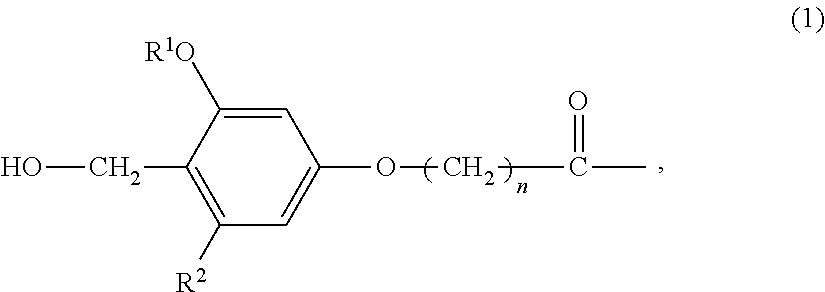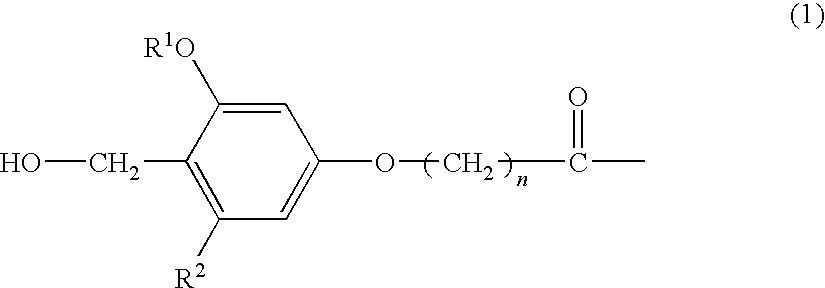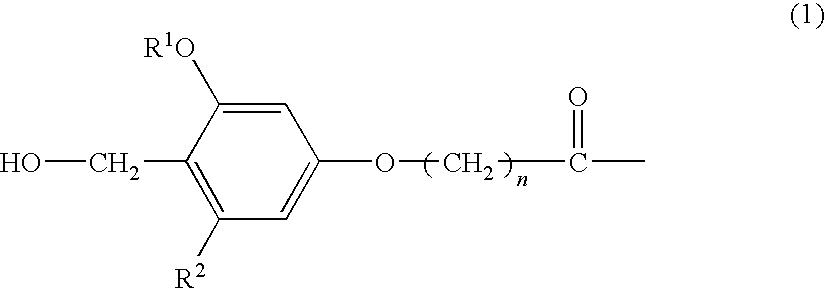Method for production of peptide thioester compound
a technology of thioester and compound, which is applied in the direction of peptides, peptide/protein ingredients, immunoglobulins, etc., can solve the problems of poor condensation efficiency, difficult to identify which oligosaccharide chain structure is involved in a life phenomenon, and difficult to obtain glycoproteins having an oligosaccharide chain with a uniform structur
- Summary
- Abstract
- Description
- Claims
- Application Information
AI Technical Summary
Benefits of technology
Problems solved by technology
Method used
Image
Examples
example 1
An amino-PEGA resin (1 g, 50 μmol) was placed in a column for solid-phase synthesis. The resin was thoroughly washed with DCM and DMF and then fully swollen with DMF. 4-hydroxymethyl-3-methoxyphenoxybutyric acid (HMPB) (30.1 mg, 0.13 mmol), TBTU (40.1 mg, 0.13 mmol), and N-ethylmorpholine (15.8 μl, 0.13 mmol) dissolved in DMF (1 ml) were placed in the column, and the mixture was stirred at room temperature for 2 hours. The resin was thoroughly washed with DMF and DCM to obtain an HMPB-PEGA resin, which was in turn used as a solid phase for solid-phase synthesis.
Fmoc-Phe (96.8 mg, 0.25 mmol), MSNT (74 mg, 0.25 mmol), and N-methylimidazole (15 μl, 0.19 mmol) dissolved in DCM (1 ml) were placed in the column for solid-phase synthesis, and the mixture was stirred at room temperature for 2 hours. After stirring, the resin was washed with DCM and DMF. The Fmoc group was removed with 20% piperidine / DMF solution (1 ml) for 20 minutes. After washing with DMF, amino acids were sequentially co...
example 2
An aliquot of the resin on which the 20-residue peptide obtained in Example 1 was formed was taken into a column for solid-phase synthesis. Acetic acid:DCM:methanol (=5:4:1) was added thereto such that the resin was fully immersed in the solution. The mixture was stirred at room temperature for 3 hours. The resin was removed by filtration, and the reaction solution was concentrated under reduced pressure. The obtained residue was purified by HPLC (Cadenza column C18 75×4.6 mm, developing solvent A: 0.1% aqueous TFA solution, B: 0.1% TFA acetonitrile:water=90:10, gradient A:B=60:40→0:100, 15 min, flow rate: 0.1 ml / min) to obtain a 20-residue peptide represented by the formula (7) (SEQ ID NO: 2).
The obtained peptide had a carboxyl group at the C-terminus, with the side chain protecting groups maintained.
ESI-MS: Calcd for C279H382N34O94:
[M+3H]3+ 1906.3. found. 1905.8
example 3
The mixed solvent of acetic acid:DCM:methanol and the reaction time used in Example 2 were changed to acetic acid:TFE:DMC (=2:2:6) and 2 hours or to acetic acid:TFE (=1:1) and 27 hours, respectively, for reaction.
In both cases, the 20-residue peptide (7) (SEQ ID NO: 2) could be obtained.
However, the condition of acetic acid:TFE:DMC gave a yield approximately 5 times higher than that given under the condition of acetic acid:DCM:methanol. Furthermore, the condition of acetic acid:TFE gave a yield approximately 8 times higher than that given under the condition of acetic acid:DCM:methanol.
PUM
| Property | Measurement | Unit |
|---|---|---|
| fat-soluble | aaaaa | aaaaa |
| solubility | aaaaa | aaaaa |
| protease resistance | aaaaa | aaaaa |
Abstract
Description
Claims
Application Information
 Login to View More
Login to View More - R&D
- Intellectual Property
- Life Sciences
- Materials
- Tech Scout
- Unparalleled Data Quality
- Higher Quality Content
- 60% Fewer Hallucinations
Browse by: Latest US Patents, China's latest patents, Technical Efficacy Thesaurus, Application Domain, Technology Topic, Popular Technical Reports.
© 2025 PatSnap. All rights reserved.Legal|Privacy policy|Modern Slavery Act Transparency Statement|Sitemap|About US| Contact US: help@patsnap.com



